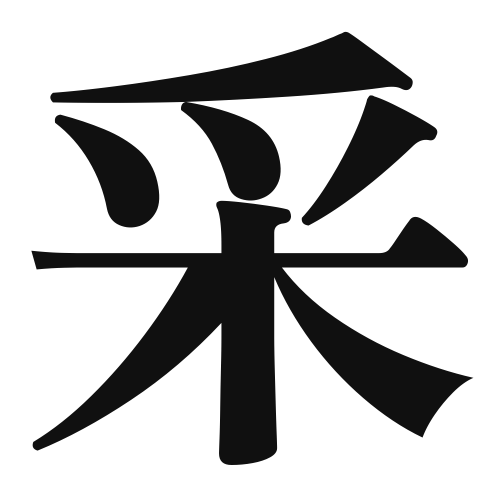1. Overview of Meaning
The kanji “采” (sai) primarily means “to pick” or “to gather.” It is often associated with the act of harvesting or collecting, particularly in the context of plants or flowers.
2. Formation and Radical
Formation of the Kanji: The kanji “采” is a compound character that combines elements to convey its meaning. It is formed from the radical for “hand” (手) and the character for “to gather” (采). This reflects the action of using hands to collect or pick.
Radical: The radical of “采” is “手” (shǒu), which means “hand.” This radical is commonly found in kanji related to actions performed by hand.
3. Examples of Usage
Common Words and Phrases: Some frequently used words that include “采” are:
- 采集 (さいしゅう, saishuu) – collection, gathering
- 采配 (さいはい, saihai) – command, leadership
Example Sentences in Daily Conversation:
- 花を采るのが好きです。 (はなをとるのがすきです。) – I like to pick flowers.
- 彼は自然の中で采集を楽しんでいます。 (かれはしぜんのなかでさいしゅうをたのしんでいます。) – He enjoys gathering in nature.
4. Synonyms and Antonyms
Similar Kanji: A kanji with a similar meaning is “取” (とる, toru), which means “to take” or “to grab.” While both involve the action of using hands, “采” specifically emphasizes the act of gathering or picking.
Opposite Kanji: An antonym could be “捨” (すてる, suteru), which means “to discard” or “to throw away.” This represents the opposite action of gathering or collecting.
5. Cultural and Historical Background
Relation to Japanese Culture: The kanji “采” is often associated with traditional practices such as flower arranging (ikebana) and harvesting seasonal crops, reflecting the importance of nature in Japanese culture.
Proverbs and Idioms: One common idiom is “采配を振る” (さいはいをふる, saihai wo furu), which means “to command” or “to lead,” illustrating the kanji’s connection to leadership and decision-making.
